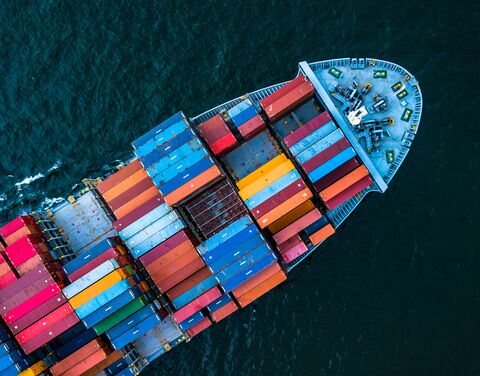
Transition bonds: more climate-effective than green investments
Not harming the environment is a good start when it comes to investing. Actively looking for improvement is the next logical step. Through transition bonds, AXA supports companies that still produce high CO2 emissions but are determined to reduce their carbon footprint.
Imagine you – as an investor – had a choice between two transportation companies. Company A has already switched its entire fleet of trucks to electric and also gets all its power from carbon-neutral solar and wind power plants. Company B has an aging collection of diesel vehicles. For a climate-conscious, forward-looking investor the choice seems clear – not just for emission reasons but also because company A is likely to have better prospects in terms of revenue and profitability in today’s economic environment.
In very simplified form, this is the basic thinking behind many sustainable investments. At AXA, we too put this into practice in various ways by means of a broad spectrum of investment solutions. Our aim is to deliver success for our customers – not only in terms of returns but also with regard to climate and other sustainability criteria.
Achieving impact vs. avoiding harm
But is it enough? Going back to the previous hypothetical scenario, the fact is that your investment in company A has not reduced CO2 emissions by a single gram. Company A was already on track to achieving zero emissions, while company B is still driving around in its diesel vehicles – even if you didn’t invest in it.
As an impact-oriented investor, you might want to approach company B and say: “Here, take my money. But you’ve got to use it to buy more climate-friendly vehicles and take the old ones off the road.”
Your portfolio would then become slightly less climate-friendly based on traditional measures, because it now includes polluter firm B. From a climate perspective it’s better, however, because you’re making a concrete impact. This is exactly the thinking behind AXA’s creation of transition bonds, which support carbon-intensive industries that are actively working to decarbonize.
How do transition bonds work?
As the name suggests, the bonds can be used by a company to borrow money, in return paying the creditor a specific interest rate – a loan, in other words.
To qualify as AXA transition bonds, these loans – and the projects they finance – must meet certain criteria. The first of these is a dynamic emissions target. In other words, we’re more interested in the extent to which the carbon emissions are reduced than in their absolute level. Green bonds are used in the latter scenario: These are focused on current emissions and are only used to finance projects that are already having a positive effect on climate and the environment. In our example, company A would probably raise finance through green bonds while company B would use transition bonds.
Thus transition bonds close the gap between sustainable projects that are suitable for green bond financing and those that do not yet reduce carbon emissions or only do so to a limited extent but are nonetheless important for decarbonizing the economy.
Transition bonds in practice
The AXA Group has invested some EUR 300 million through transition bonds, such as:
Electricity production: Loans to an electricity generating company in an Asian emerging-market country that is currently dependent on coal. These loans are earmarked for the development of gas-fired power plants. In fast-growing emerging-market countries, gas will likely play a major role in the transition to a low-carbon economy.
Maritime transport: Loans to shipping companies. The switch from heavy marine diesel oil to liquid natural gas is currently the most efficient way of reducing emissions from commercial shipping. As things stand, shipping is one of the few sectors in which transition technologies can be implemented on a large scale.
Industrial resource efficiency: Loans to a South American industrial firm that is implementing measures including energy efficiency and waste water treatment. The industrial sector needs to set itself the target of producing twice as much value added per unit of energy consumption compared with current levels by 2040.





